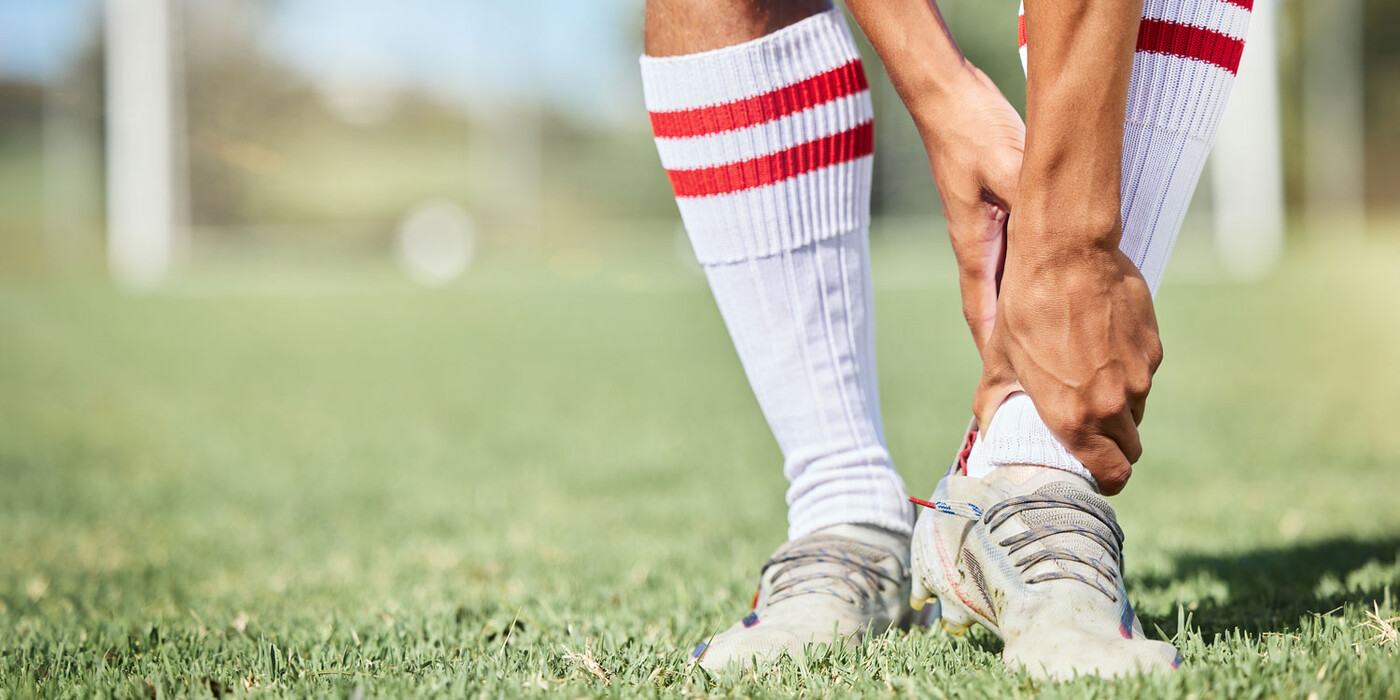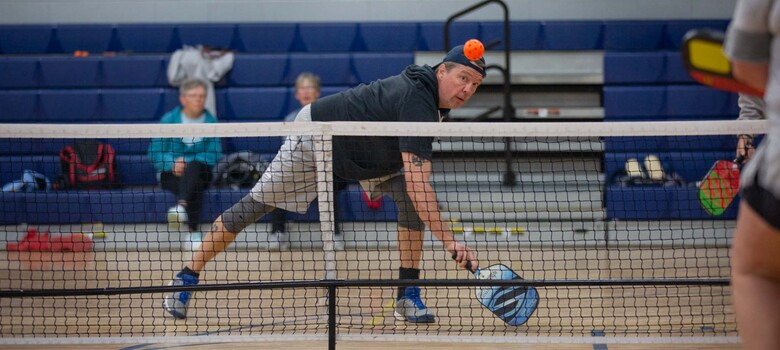Ankle Sprains: What You Need to Know

If you or someone you know plays football or soccer, chances are good that you, or they, have experienced a painful ankle sprain. It is the most common injury to plague football and soccer players, and it can be hard to prevent in the heat of the game. Still, there are steps you can take to lower your risk for ankle injury. Here, Rebecca Wadlinger, DO, a sports medicine specialist at Duke, explains how to keep your ankle healthy, and how to care for ankle sprains if they occur.
Why are soccer and football players at high risk for ankle sprains?
Both sports (as well as several others) require players to wear spiked shoes, or cleats, that plant the foot rigidly into the ground during play. When the player makes a sudden move, the foot remains fixed, while the leg and body twist in a different direction, and that is when the ankle can give out. Ankle sprains are also common among volleyball and basketball athletes but can occur in any sport.
What can athletes do to avoid ankle injuries?
- Find the ideal footwear for the surface you play on. Try to find the right balance between a cleat that gives you enough traction but doesn’t plant your foot too rigidly.
- Focus on proprioceptive training, which teaches the nerves in the ankle to recognize when the ankle is in a weak position. The nerves then fire the muscles and tendons into action to prevent the ankle from giving way. This is especially important if you’ve suffered ankle sprains in the past. Wobble or balance boards are a great way to work on balance and ankle stability. They are available online.
- Strengthen your peroneal tendons, which run along the outside of the ankle and are responsible for stabilizing it. A physical therapist or athletic trainer can recommend exercises that strengthen these tendons to help prevent future sprains.
- Use kinesiology taping. It increases nerve sensitivity so that your nerves are more attune to your ankle positioning. This reduces the likelihood of a sprain.
- Wear an ankle brace in any practice or game situation if you’re prone to ankle injuries. It’s your best prevention if you’ve tried other methods and still experience recurrent sprains.
If I have sprained my ankle, what should I do?
Follow the RICE method – rest (relative to the location of the injury), ice, compression, and elevation. Work on early range of motion, especially if there is swelling. If you still experience discomfort after four or five days, seek medical care. If you’re an athlete, see an ankle specialist or sports medicine doctor who understands the mechanics and anatomy of the ankle and the demands of your sport. They can oversee your rehabilitation to get you back in the game.
When should I seek immediate medical care?
If you can’t put any weight on your foot following injury, if there is significant bruising or swelling, or if there is pain around the bony parts of the ankle, you should seek medical care – such as a as a same day sports medicine appointment or a visit to an urgent care – right away. An X-ray can determine if the ankle or a bone in your foot is broken.



